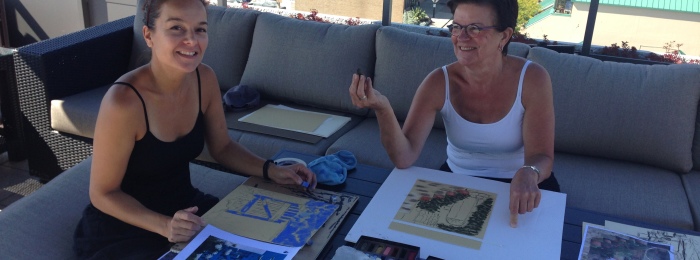Introduction to Art Basics – improving your art one step at a time

A lot of people I meet, when I tell them I consider myself an artist, tell me they’d love to be more creative and paint, but are afraid to even start, because they feel they don’t know anything about ‘the basics of art theory’. Well, I am here to help! Let’s release that creative beast that’s inside you! 😉
To begin making art (or at least being creative in an artsy way), you need to be brave and throw all your fears to the wind. You have to be willing to fail. A lot. But like in the rest of life, hopefully there’s a lesson to be learned each time you’re not happy with your art result (what you may consider a ‘failure’). These efforts should be considered practice runs, trials, exercises. If they result in something you’re happy with, great! Mostly it is about the doing it, the time spent honing your skills, and hopefully enjoying it in the process. What results at the end of it is either a happy accident or another lesson learned. At least that’s how I look at it! That way you’re primed to enjoy the process, and eventually more happy accidents will happen more regularly. As my own art teacher Elsie Evans at Attic Studios in Bangkok always says: “Don’t be precious with your work!”
This is why I am starting a blog series, called ‘Art Basics’; to take the mystery out of being an ‘artiste’ (said with a French accent for proper ‘Artiste Attitude ;-)). In it, I’ll discuss the basic tips, tricks and the things all the so-called experts look for in art, that in general make for a better, more interesting result.
Many of these basic knowledge items can be applied not just to painting (in any medium), but to photography, sculpture, website or logo design, weaving, working with fabrics, even home décor. The world is a visual place, we’re all visually stimulated, all the time and these principals surround us, whether we realise it or not (just think of product logos; the shapes, colours and lines they use to make an impact).
Things we’ll discuss in this series: the colour wheel (basic colour theory), values, lines, composition, balance, contrast, and many more. Once we’ve got the basics covered, we’ll dive deeper into tips and tricks to make achieving great art pieces easier, and it may even include some interviews with fellow artists and suggestions from their experience.
If you have a specific topic you’d like me to talk about, please send me feedback by writing a comment below or drop me a message on my Facebook page. I look forward to introducing you to a whole new world of creativity and fun!

This Post Has 0 Comments